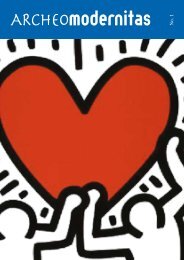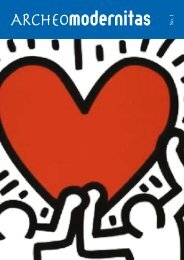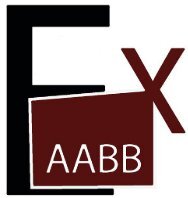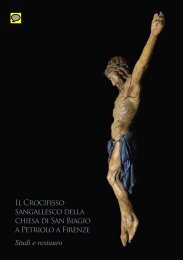ARCHEOMODERNITAS Rivista semestrale di Ineffabili fatti d'Arte nr.1 a cura dell'Associazione Ex Studenti dell'Accademia di Belle Arti di Bari
Il neologismo “ARCHEOMODERNITAS" che intitola la rivista e la mostra allude al processo che muove la ricerca artistica nell’ambito della tradizione creativa avvalendosi dell’ esempio e dell’afflato del passato, ma si connette funzionalmente e organicamente al patrimonio linguistico-espressivo del panorama contemporaneo all’epoca in cui tale processo si produce, e che a da sempre ha animato l’arte in tutte le sue forme rendendo, prima o poi, protagonisti del panorama culturale quegli artisti, anche i più misconosciuti nella propria epoca, che hanno saputo raccogliere l’eredità preziosa dei Maestri o/e elementi essenziali dell’esistenza, coniugandoli e fondendoli con l’espressività del loro presente. In tale ottica “ARCHEOMODERNITAS" intende superare le distinzioni tra “antico” e “moderno” puntando l’ attenzione "su ineffabili fatti d’arte visiva” grazie al contributo di esperti e professionisti accreditati nel campo dell’arte, senza porre limiti o barriere tra epoche, in quanto le componenti di qualsiasi forma d’arte brillano degli stessi valori universali comunque afferenti l’ esistenza umana. Questo evento evidenzia gli aspetti piu‘ suggestivi delle opere visive,quel mistero ineffabile che fa di esse oggetti senza tempo, universali. Non esisteranno prevenzioni per forme d’arte visiva inusitate o completamente innovative purchè esse rivelino ricchezza di valori espressivi con forte risonanza emotiva, non tralasciando di riservare attenzione alla ricerca sperimentale e ai nuovi linguaggi.
Il neologismo “ARCHEOMODERNITAS" che intitola la rivista e la mostra allude al processo che muove la ricerca artistica nell’ambito della tradizione creativa avvalendosi dell’ esempio e dell’afflato del passato, ma si connette funzionalmente e organicamente al patrimonio linguistico-espressivo del panorama contemporaneo all’epoca in cui tale processo si produce, e che a da sempre ha animato l’arte in tutte le sue forme rendendo, prima o poi, protagonisti del panorama culturale quegli artisti, anche i più misconosciuti nella propria epoca, che hanno saputo raccogliere l’eredità preziosa dei Maestri o/e elementi essenziali
dell’esistenza, coniugandoli e fondendoli con l’espressività del loro presente.
In tale ottica “ARCHEOMODERNITAS" intende superare le distinzioni
tra “antico” e “moderno” puntando l’ attenzione "su ineffabili fatti d’arte visiva” grazie al contributo di esperti e professionisti accreditati nel campo dell’arte, senza porre limiti o barriere tra epoche, in quanto le componenti di qualsiasi forma d’arte brillano degli stessi valori universali comunque afferenti l’ esistenza umana.
Questo evento evidenzia gli aspetti piu‘ suggestivi delle opere visive,quel mistero ineffabile che fa di esse oggetti senza tempo, universali.
Non esisteranno prevenzioni per forme d’arte visiva inusitate o completamente innovative purchè esse rivelino ricchezza di valori espressivi con forte risonanza emotiva, non tralasciando di riservare attenzione alla ricerca sperimentale e ai nuovi linguaggi.
- No tags were found...
Create successful ePaper yourself
Turn your PDF publications into a flip-book with our unique Google optimized e-Paper software.
CONTENTS of the <strong>Arti</strong>cles NUMBER ONE<br />
Documents<br />
THE COVER<br />
Stefano Garosi e Alvaro Spagnesi:"Archeomodernitas" <strong>di</strong> Keith Haring: the fresco hypothesis<br />
"Tuttomondo" of Pisa.<br />
(video Piergiorgio Castellani speaks of Haring and the birth of Pisa murals)<br />
In this context, it presents a novel prequel concerning the achievement of the mural that Keith<br />
Haring executed in Pisa in 1989, a few months before his death on 16 Febbraio1990. (Cf. Tuttomondo<br />
by Wikipe<strong>di</strong>a in link): the famous American pop artist Andy Warhol’s pupil, who has<br />
brought honor to the mural "street," he wanted to carry out the work "Tuttomondo" (allworld)<br />
fresco and Pier Giorgio Castellani, thanks to which the artist was in Italy to work on a large<br />
mural painting, he asked his former professor of Art History (Pontedera at High School) Alvaro<br />
Spagnesi,a feasibility technical report to be submitted to Haring.For the first time it is presented<br />
that report, prepared in conjunction with one of the restorers of the best-known paintings<br />
of Florence, Stefano Garosi (In Appen<strong>di</strong>x <strong>Arti</strong>cle by link). This testimony reveals, in the opinion<br />
of Alvaro Spagnesi, art historian and critic Florence to <strong>Bari</strong> for many years, the archeomoderna<br />
setting that was following the pop artist and that accelerated the occasion of his last public<br />
work that was carried out on an exterior side wall of the convent of S Joseph in the center of Pisa.<br />
PAINTING CONTEMPORARY<br />
Clemente Francavilla: The Art of Adele Plotkin, first Professor of Psychology of Form Academy<br />
of Fine Arts in <strong>Bari</strong>.<br />
For the first time on line, this text which was extrapolated from the monograph of Adele Plotkin<br />
for "Archeomodernitas" by its author Clemente Francavilla sheds light on an important<br />
contemporary artist, a student of Josef Albers, "emigrated from Bottrop in Germany in the US<br />
in 1933, he invited to lead the Design Department, a position he held from 1950 to 1958. the<br />
educational program included the integration of <strong>di</strong>fferent <strong>di</strong>sciplines within design courses, on<br />
the Bauhaus model "of teaching which he applied in his Plotkin teaching of Psychology of the<br />
form "at the Academy of Fine Arts in <strong>Bari</strong>. Clemente Francavilla, its <strong>di</strong>rect and today the same<br />
<strong>di</strong>scipline a student teacher at the Academy of <strong>Bari</strong>, author of study and graphic textbooks for<br />
adoption throughout Italy, outlines the work artist starting right organization "teaching commissioned<br />
by Albers," developed by him "along with Klee, Kan<strong>di</strong>nsky and Itten, in a <strong>di</strong>dactic experience<br />
in the Bauhaus of the twenties and thirties in Germany, once the genetic study of form."<br />
RESTORATION SCULPTURE<br />
Mirella Branca: The Crucifix Sangallo Church San Biagio a Petriolo in Florence Stu<strong>di</strong>es and<br />
restoration.<br />
The booklet describes and comments on the restoration, funded by the Rotary Club Florence<br />
Michelangelo, was Given to the press in 2011 and here for the first time published<br />
online. It is a work of the highest level of Francesco and Antonio da Sangallo performed<br />
in the Twenties of the century XVI in cm linden wood. 91x86 worshiped in the ancient<br />
church of San Biagio in Petriolo, situated near the airport of Florence Peretola. The restoration<br />
of 2011, of which it does not have many tracks in networking, topical again after<br />
the much publicized, recent restoration (2014) of the wooden crucifix by Antonio (or Francis)<br />
Sangallo located in the Chapel of the <strong>Arti</strong>sts (or San Luca) at the Basilica of theSantissima<br />
Annunziata in Florence allowing stu<strong>di</strong>es and comparisons in the field of restoration.<br />
This intervention, in particular, has solved between each other and with extraor<strong>di</strong>nary<br />
skill, the conflict between religious needs and problems of scientific restoration. Often, in<br />
41








